Rhinoplasty (nose job) is performed with excellence at the University of California San Francisco. Rhinoplasty Surgery is one of the most common and elegant plastic surgery procedures performed today. It can reshape, refine, reduce, or augment a person's nose in order to achieve facial harmony and improve appearance.
Rhinoplasty may be performed for functional rather than cosmetic reasons as well. Combining nose reshaping with septoplasty or endoscopic sinus surgery can effectively treat certain breathing problems,and chronic sinus infections. It may also be performed as a reconstructive procedure to correct a birth defect or an injury such as a broken nose.
Rhinoplasty Before and After Gallery
"...gave me 'my best nose' and I am thankful everyday..."
-B.C.
View more before and after Rhinoplasty gallery.
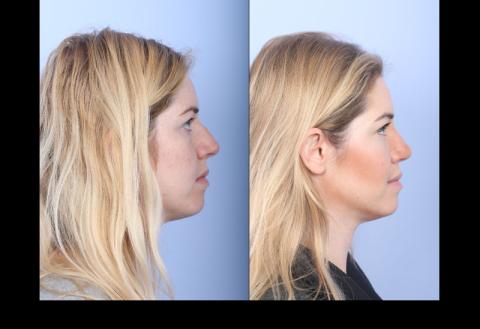
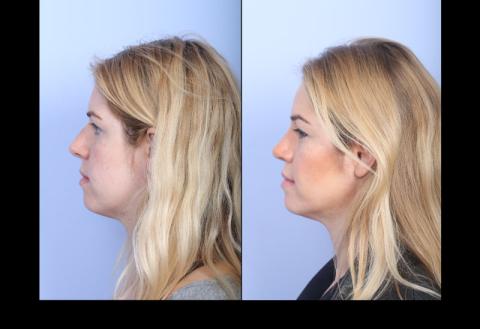
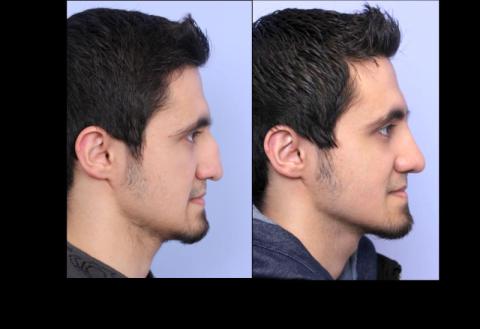
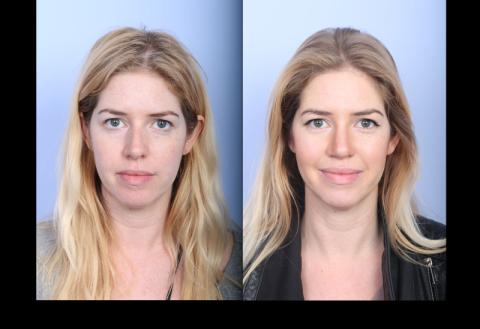
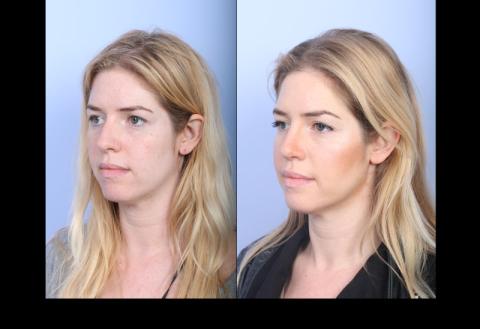
Rhinoplasty Candidates
The best candidates for rhinoplasty are at least fifteen years old and have essentially completed facial growth. The patient should also have good overall general health and should ideally be a non-smoker. Rhinoplasty is an excellent procedure for achieving the following:
- Balance the size of the nose with the other facial features
- Modify the width of the nose at the bridge
- Improve the nasal profile, including removing humps or depressions
- Contour a nasal tip that is too large, "boxy," drooping or upturned
- Change the angle between the nose and the mouth
- Narrow and reshape the nostrils
- Correct asymmetry or deviation
Procedure - Cosmetic
Rhinoplasty is an outpatient procedure that is performed under IV sedation or general anesthesia.
Drs. Knott and Park typically use one of two techniques when performing nasal surgery. In endonasal rhinoplasty, incisions are made within the nostrils. In an open rhinoplasty, an additional small incision is made across the columella, the tissue bridge between the nostrils. With both methods, the surgeon gently lifts the soft tissues covering the nose. He sculpts the bone and cartilage to the desired shape. Any additional cartilage needed to augment the nose can often be taken from the septum, or in revision cases, cartilage from the ear or rib may be required.
If the patient has obstructed nasal breathing, Dr. Knott or Park straightens the septum and the inner structures of the nose to improve breathing. Then the tissues are re-draped and stitched closed. If the patient desires nostril reshaping, this is done as the final stage of rhinoplasty.
The entire procedure generally lasts for two to three hours.
Procedure - Reconstruction
A nasal reconstruction procedure is sometimes necessary after the removal of a skin tumor. Both the appearance of the nose and its functionality can become compromised, and nasal reconstruction may be used to repair and restore it structurally.
General anesthesia or local anesthesia with sedation is typically used. Dr. Knott or Dr. Park will consider the condition of the wound and amount of loss of skin, cartilage and tissues around the nose. Of particular importance is ensuring that the nasal airway will remain intact by building it up with cartilage so blockages do not occur at a later point.
For a small wound on the nasal skin, a tissue transposition is usually best. It is a relatively simple closure and causes only a small scar. Grafting may be used when the wound is larger. Full-thickness skin grafts can offer an aesthetically pleasing result for some parts of the nose. For larger wounds, skin flap from the forehead or cheeks are used to provide a result that matches the skin color, contour and texture of the nose. If cartilage or bone is needed, Dr. Knott or Dr. Park may use your septum, ear cartilage, or rib cartilage, or even cadaveric rib to provide appropriate structure and shape to the nose. Your surgeon will make the determination as to which method is best for you depending upon the size, depth and location of your wound.
Recovery
Patients will experience some oozing of blood from the nose for several days following rhinoplasty, during which time a special dressing will be supplied. Some bruising around the eyes is normal and usually fades within seven to ten days. Patients will experience nasal swelling for several weeks and this will gradually improve. Nasal breathing may be likewise impaired for several weeks but will improve as the swelling recedes. For a short time after surgery, patients may experience puffiness, a nose ache, or a dull headache. Most patients use pain medications for three to four days and return to work in little more than a week following surgery.
The results of rhinoplasty become gradually apparent as days pass and swelling recedes. Swelling may reappear from time to time in the first year after the procedure. It is typically more noticeable in the morning and fades during the day. Contact lenses can be worn immediately after a rhinoplasty, but glasses may need to be taped to your forehead or propped on your cheeks for up to four weeks.
To learn more about rhinoplasty and whether or not this procedure is right for you, please call us today to schedule a consultation.
